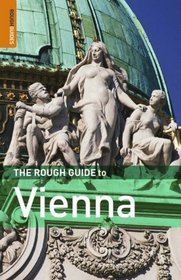Search -
The Rough Guide to Vienna - Edition 4
The Rough Guide to Vienna Edition 4
Author:
INTRODUCTION Most people visit Vienna with a vivid image of the city in their minds: a monumental vision of Habsburg palaces, trotting white horses, old ladies in fur coats and mountains of fat cream cakes. And they’re unlikely to be disappointed in this city that positively feeds off imperial nostalgia – High Baroque churches and ari... more »
Author:
INTRODUCTION Most people visit Vienna with a vivid image of the city in their minds: a monumental vision of Habsburg palaces, trotting white horses, old ladies in fur coats and mountains of fat cream cakes. And they’re unlikely to be disappointed in this city that positively feeds off imperial nostalgia – High Baroque churches and ari... more »
ISBN-13: 9781843534112
ISBN-10: 1843534118
Publication Date: 4/25/2005
Pages: 384
Rating: 2
ISBN-10: 1843534118
Publication Date: 4/25/2005
Pages: 384
Rating: 2
4.5 stars, based on 2 ratings
Genres:
- Travel >> Europe >> Austria >> General
- Travel >> Europe >> Austria >> Vienna
- Travel >> Guidebook Series >> Rough Guide




